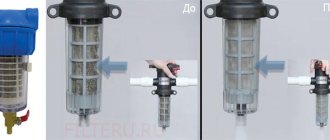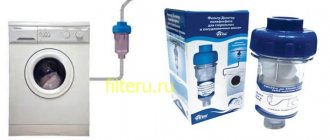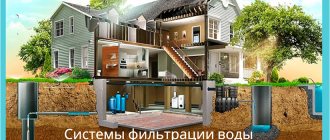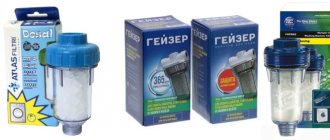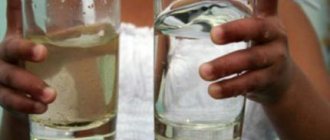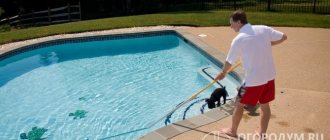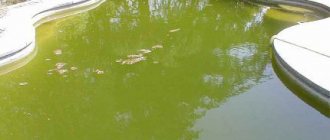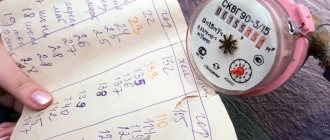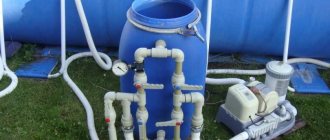A pool filter is a device for purifying and disinfecting water from household waste and bacteria. The use of a filtration system when filling the bowl with liquid will protect bathers from harmful microorganisms. How good the cleaning will be depends on the equipment used. Therefore, before choosing one, you need to find out what systems and filters are available for the pool, on what principle they work and how to install them correctly.
Methods of water filtration
Consultants of the Plumber Portal website identify the three main elements of a pool filtration system:
- filters;
- circulation pump;
- six position valve.
A purifier can be installed in front of the pump to pre-remove large debris from the water. The liquid then goes inside a sand or cartridge pool filter, where it is cleaned of small impurities.
Constant circulation of water through pool filters is the key to the safe use of this water feature. Based on the method of collecting liquid, skimmer and overflow pools are distinguished, in which water for purification is taken from the bottom and from the top. In this case, the selection from the bottom is the same, but the intake from the surface varies slightly.
Filtration of water in an overflow pool
The liquid splashing out beyond the bowl of the overflow structure ends up in special drains. The gutters move the water first to the tank and then to the pool filtration unit.
The peculiarity of the overflow design is that the surface of the liquid is at the same level as the side of the structure. Most of the pollution collects at the top, so the dirtiest water goes down the drain.
If there is no movement inside the reservoir bowl, then the liquid does not flow into the drains. Therefore, this filtration scheme is suitable for stationary pools, but is not used for frame and inflatable structures.
Filtration of water in a skimmer pool
Suction nozzles are located at the top of the walls of the structure, similar to a bathroom overflow. In inflatable and frame tanks, skimmers are lowered to a shallow depth, hanging directly on the side. The water surface is located 0.2-0.3 m below the top of the wall.
A skimmer is a device for draining and cleaning the top layer of water in a pool.
The main disadvantage of this type of liquid intake is that due to the low location of the holes, surface contaminants are poorly removed, and some of them settle to the bottom.
Therefore, to clean the lower layers, these ladders are installed, through which the liquid is supplied to filters for water purification in the pool.
The number of water intake nozzles at the bottom and in the walls depends on the volume of the filled bowl, the level of contamination and the frequency of use of the water facility. In this case, the rule must be observed: 3 parts of water enters the filtration from above, 1 part from below.
Bottom nozzles also provide drainage of liquid during disinfection, cleaning of walls, repair work or preservation of the pool for a certain period.
For personal use, a skimmer cleaning system is usually used, since installing an overflow structure is much more expensive.
Cleaning with filter equipment
The water collected through the skimmer and bottom nozzles enters the coarse filter, then, using a circulation pump, is supplied to the pool filter for finer purification.
Moreover, such a system can be equipped with various means of bacterial cleaning (ozonator, chlorine generator) and a device for heating the liquid. After passing through all levels of cleaning and heating, the water enters the reservoir bowl.
The area where purified liquid is introduced is also determined by design features. In overflow structures, the injection zones are located at the bottom, and in skimmer structures, on the side opposite to the placement of the suction holes. This arrangement of input zones ensures uniform water purification and better circulation of the resource.
Chemical cleaning agents
A chemical filtration system involves the use of reagents to purify liquid from dangerous microorganisms. Depending on the type of filter, one or several cleaning operations may occur at once.
Better efficiency can be achieved using an integrated chemical approach:
- chlorination;
- bromination;
- iodization.
For bacterial protection in individual pools, cheap but effective chlorine is typically used as a disinfectant. However, chlorination has significant disadvantages:
- unpleasant odor;
- strong allergen;
- does not affect spore-forming microorganisms;
- releases toxic fumes (chloramines and chloroform).
However, chlorine is very popular because it can evaporate quickly. 5-7 hours after introduction into the tank, the unpleasant odor disappears, harmful compounds evaporate, and the likelihood of an allergic reaction decreases.
The effectiveness of using bromine is no worse than chlorination. However, the cost of this reagent is much higher. At the same time, bromine does not emit unpleasant odors, and if the dosage is observed, it is safe for human health.
Bromination of pool water allows you to destroy unpleasant odors, bacteria, fungi and viruses even when the pH value deviates towards a higher acid content or, conversely, alkali.
A separate category of chemical pool water filtration systems are special flocculant preparations. Their main purpose is to enlarge small contaminants and grease residues to a size at which they can easily be retained by a mechanical cleaning filter.
Comparison table of the presented models
The table below contains brief characteristics of the models considered:
| Model | Productivity, l/h | Pressure, bar | Weight, kg |
| Bestway 58486 | 9,8 | 1,59 | 36 |
| Aquaviva S450 (D450) | 8.1 | 2.5 | 45 |
| Hayward 33 cubic meters/hour | 33 | 3,5 | 4 |
| Aquaviva V700(B) | 20,2 | 2,5 | 215 |
| MTH (skimfilter) IS6, 5 cubic meters/h | 5 | – | – |
| Hayward Star Clear C500 | 11,3 | 3,4 | – |
| Emaux SP650 (15.3 m3/h, 627 mm, 145 kg, side) | 15,3 | 2 | 145 |
Design differences of filtration devices
Depending on the material used for filtration, the following devices for filtering pool water are distinguished:
- mechanical;
- electrophysical;
- combined.
Each of these filters effectively copes with a certain type of contaminant, therefore, for better liquid purification, it is recommended to use combined filtration systems that are equipped with different types of filters.
Mechanical pool filters
The following materials can be used as a filter element for mechanical devices:
- sand;
- woven or non-woven membrane;
- Activated carbon.
The principle of operation of a mechanical device is that a membrane, layers of coal or sand, passing liquid through themselves, retain most of the contaminants and impurities.
All filter equipment for mechanical pools can be divided into:
- sand;
- cartridge;
- diatoms.
This cleaning method is used for small pools with a volume of up to 10 cubic meters. For large tanks, in addition to mechanical cleaning, you will also need to use chemical cleaning.
Sand filters for cleaning. Sand-filled devices are the simplest and most affordable. The device consists of a closed plastic container with two holes, which are designed for the entry and exit of liquid. The tank is usually filled with quartz sand, which acts as a filter material. Organic impurities, chemical compounds from chlorination and mineral salts are trapped in the filter layer of quartz sand.
The disadvantage of such a filter is that it is capable of capturing only suspended matter, the size of which is at least 20 microns, short service life - no more than 3 years, large weight and size. You can increase the service life to 5-6 years and increase the level of purification by replacing quartz sand with glass. The most effective is considered to be a combined filling with a mixed composition, in which layers of crushed stone, gravel and sand successively alternate.
At the same time, the sand cleaner is easy to maintain and can be easily washed using a reverse pump. To remove lime deposits from the elements of the device, it is enough to introduce special products into the pool filter and leave them there for several hours with the pump turned off. In addition, such a structure is easy to assemble with your own hands; we will describe the manufacturing process a little later.
The low cost and ease of maintenance of the sand filter have made it universal and widely used.
Cartridge. The function of the working element is performed by the thinnest membranes made of propylene plates. Cartridges effectively capture organic particles ranging in size from 10 microns, mechanical and mineral salts. The degree of purification is almost twice that of a sand cleaning system.
Cartridge filters for pools are a box or flask with a hinged or removable lid with a cartridge inside. There is also a small plastic bag in the tank, which is designed to collect and store captured contaminants.
The main advantages of a cartridge-type filter:
- compactness;
- high degree of water purification;
- duration of operation;
- lack of backwash function.
Periodically, the cartridge must be removed from the flask and washed. The filter element is replaced every 3-12 months, while the device itself operates much longer. Therefore, for its continuous operation, a supply of a pair of replaceable cartridges is required.
Cartridge filters are often installed in the same housing with a portable pumping station, which is why these devices are sometimes called filter pumps.
The main disadvantage is the high cost of such equipment, therefore, despite the best performance, cartridge-type cleaners are less popular.
Diatomaceous earth (diatomite) filter. The most expensive mechanical device. The function of the filter filling is performed by powdered and heat-treated diatomite.
Diatomite is a siliceous sedimentary rock made from the compressed shells of ancient microorganisms and algae.
Before using it as a filter, diatomite powder is heated in an oven at a temperature of 1200 degrees for at least 24 hours. Heat treatment removes all remaining organic matter and turns the rock into a finely dispersed homogeneous mixture with excellent cleaning properties.
Diatom filters are manufactured in two variations. In the first case, the design of the device is similar to that of a sand device. Only instead of sand, diatomaceous earth powder is used. In the second case, the filtration system consists of several cartridges arranged in series in one housing through which water passes. This design purifies the water as much as possible, removing debris with a size of only 1-2 microns.
At the same time, in the process of purifying the liquid, it is saturated with silicon, which reduces the use of chemical reagents by 75-80%. Silicon-enriched water has healing and rejuvenating properties. Therefore, the most expensive diatomaceous earth pool filters compete with cheap sand-type cleaning systems.
Electrophysical cleaning devices
Electrophysical filters for cleaning swimming pools began to be used quite recently. Basic methods of electrophysical water purification in swimming pools:
- ozonation;
- ultraviolet radiation;
- silver ionization;
- ionization with copper.
Ozonation is considered one of the most progressive and environmentally friendly methods of purifying pool water. Ozone has powerful oxidizing properties. When it passes through the liquid, almost all bacteria and microorganisms are destroyed, while the composition of the water remains unchanged.
The main advantages of ozonation:
- destruction of bacteria and microorganisms;
- elimination of unpleasant odor;
- saturation of water with oxygen.
The disadvantages of such a filtration system for a pool include the need for a special installation and its high cost. When ozonizing a liquid medium, the ozone concentration should not exceed 0.03 mg/m3; an overdose can be harmful to humans. Since the effect of ozone on the human body has not been fully studied, ozonation of water is prohibited in a number of countries.
Ionization of water resources has the following significant advantages:
- copper and silver ions remain in an active state for a long time;
- when using an ionizer and an ozonizer together, chlorination can be abandoned;
- after ionization, the water meets the drinking standard;
- absence of allergic reactions and odor.
In addition, copper ions promote the gluing of small particles, which makes them easier to catch.
Disadvantages of water purification through ionization:
- poor combination with other methods of disinfection;
- the impossibility of completely eliminating chlorination in large pools;
- The influence of metal ions on the human body has not been fully studied.
Ultraviolet radiation is another way to effectively purify the aquatic environment, allowing you to completely abandon chemicals. When purchasing and installing an ultraviolet lamp, you must take into account that it only works effectively in purified water.
The combination of ionization and chlorination is most widespread in large pools. You can refuse to use chlorine by replacing it with an ozonizer, but the combination of “ozonation - ionization” is rarely used due to the high cost of the equipment and significant energy consumption.
Combined filtration devices
Combined cleaning involves the installation of an entire system of filters and units. When choosing combinations, it is necessary to take into account the influence of cleaning methods and means on each other, the decrease and increase in their effectiveness. So, for example, a combination of ultraviolet radiation with the introduction of a solution of sodium hypochlorite, hydrogen peroxide or ozone gives a good result.
Complex combined water filtration systems are used in large public stationary swimming pools. Such designs allow you to avoid periodic draining of water and mechanical cleaning of the bottom and walls of the pool.
A combined filter system requires a significant area and large financial investments, but at the same time provides maximum purification of the water in the pool.
Lists of the best devices
From the experience of selling filtration equipment, it became clear that the most popular systems from different segments were the models that we will describe below.
SF-mix manual up to 0.8 m3/h
AMETHYST - 02 M up to 2 cubic meters/day.
Aeration unit AS-1054 VO-90
TM Intex (28602)
The device is suitable for servicing small swimming pools. Productivity – 1250 liters in 60 minutes. The parameters of the outlet liquid comply with sanitary standards. At the same time, electricity consumption is only 30 watts (less than one household light bulb). Very easy to install. It is connected using two corrugated hoses, it is even possible without insertion. It costs less than three thousand rubles, so almost any family can afford to install it.
INTEX 26652
A complete device with all the necessary functions (flushing, different operating modes, decent throughput, timer, emergency shutdown). It has proven itself well in servicing medium-sized reservoirs. It is in demand for equipping stationary facilities. The working fluid is sand. Optimal ratio of quality, power and price (up to 21,300 rubles).
220-240V JILONG FILTER PUMP 29P415EU
Autonomous system – filter-pump. Requires minimal effort to put into operation. Due to its low cost (RUB 3,000) and simplicity, it is one of the most popular models for frame structures. The cartridge is capable of cleaning foreign particles 15 microns in size.
How to choose a pool filter?
The choice of a filtration system must be approached very scrupulously, since the health of those who swim in the pool depends on the quality of the water.
The main criterion that must be followed when choosing a pool filter is throughput. This value is calculated in liters or cubic meters of liquid cleaned by the system per hour of operation. With the help of modern pool filters, you can filter out even microscopic suspensions, not to mention large particles.
The degree of purification is determined by the filtration speed and the type of filter used. At a lower speed, the maximum degree of water purification is ensured. In this case, the rule must be observed: the entire volume of water must pass through the filtration unit at least three times.
When choosing a pump, you should also focus on the volume of the pool. It is necessary to take into account that an increase in the speed of water passage through the filler leads to a decrease in the quality of cleaning. Obviously, for a powerful pump you need to select a filler with a large capacity.
Modern cleaning units and filters are sold as a set, so there is no need to match the container to the pump or vice versa. Determining the performance of a filter is quite simple. To do this, the total volume of water in the pool must be multiplied by 2.5 and divided by 10.
For example, let's take a pool measuring 10x4x2, which holds 80 tons of water. We calculate: 80 × 2.5/10 = 20 cubic meters/hour. The filtration unit for the pool should be selected based on the calculated capacity.
If the issue of water purification in a small home pool can be solved by a mechanical filter pump, then for larger structures a whole system of filters and devices will be required.
Selection rules
The following selection criteria are adhered to:
- high power, allowing you to quickly pump water;
- energy saving;
- noise should be absent or low;
- long warranty period, at least 1 year;
- corresponding price: the better and higher quality the internal contents, the higher it is;
- easy installation and operation;
- rare need to replace the cleaning component (cartridge, sand).
When the choice is made, the device is purchased. After arriving home, they immediately check the functionality. The warranty period is limited, it is better to immediately check the functionality and ability to purify water.
Filtration system installation
Basic steps to implement a comprehensive cleaning system for large swimming pools:
- selection of main and additional pumps;
- installation of mechanical and chemical filters;
- installation of ionization, ozonation, UV;
- selection of heat exchanger;
- preparing premises for pumping equipment; complete set and assembly of the system.
When designing a complex filtration system, it is necessary to carry out all the work before installing the pool. Otherwise, the work on laying communications and connecting will become significantly more complicated. It is also important not to forget when designing about organizing a good ventilation system for the pool.
Let's consider the order of connecting the filtration system:
- Unscrew the screw of the clamping clamp.
- Remove the six-way valve.
- Remove the sprocket from the filter and then install it in the filtration barrel, carefully closing the hole.
- Pour quartz sand with a grain size of 0.4-0.8 mm into the barrel. Sand must not get into the sprocket pipeline!
- Clean the neck of the barrel from grains of sand and begin assembling the base.
- Place the six-way valve on the pipeline and secure it to the end of the filter housing using a clamp.
- Make a connection.
Important! The pump is started only when the pool is filled with water, otherwise the equipment may fail. Air must be removed from the hoses.
Content
- Kinds
- Principle of operation
- Rating TOP 7 best pool filters Bestway 58486
- Aquaviva S450 (D450)
- Hayward 33 cubic meters/hour
- Aquaviva V700(B)
- MTH (skimfilter) IS6
- Hayward Star Clear C500
- Emaux SP650
- Sand – Poolmagic ELEG 250
Operation and care
Operating equipment for water purification in a swimming pool is not difficult. The sand filter needs to be changed about once every two weeks; more modern devices themselves notify about the need for cleaning.
Quartz sand is changed the least often - about once every one and a half to two years. Turn on the pump 2-4 times a day. Change at least 4% of the water every week. The pump must be removed before the start of the winter season.
The main principle of equipment care is timely cleaning of the filter:
- For sand, you need to rinse the hose from time to time.
- The cartridges are washed under pressure and then allowed to dry.
- Diatom powder is also washed.
Servicing an inflatable pool additionally involves checking the tightness of the material and the absence of punctures.
But it is always worth remembering that under no circumstances should you fill the pool from open water bodies. The water in them is inhabited by various microorganisms, which will require a lot of time and money to filter. And also the water from these sources will have an unpleasant swampy color and smell.
Have you noticed that the water has become poorly purified? Make sure the acidity level is normal and the filter does not need cleaning. Pay attention to the pump - it may also not work correctly. Check the coarse filters for contamination - the problem may be in them too. If you cannot identify and solve the problem yourself, contact a specialist.
Purpose, principle of operation
The main purpose of a pool filter is to clean water from foreign objects that have entered it (for example, tree leaves, grains of sand).
Essentially, the device is a water pump with a filtration unit located inside. Water is taken from one area of the pool, filtered inside the apparatus, and then released into another area.
If you do not use a pool filter, then:
- Swimming will become uncomfortable due to water contamination.
- The water will quickly deteriorate and begin to “bloom.”
In addition, using the pump of the filter device, you can evenly distribute the necessary auxiliary substances (for example, antiseptics) throughout the container with liquid, making the water temperature more uniform and uniform.
Expert opinion
Kuznetsov Vasily Stepanovich
Typically, the devices operate from an electric pump, powered from a household electrical network with a voltage of 220/230 Volts.
Pumps
Intex 28606 drainage
The main task is to make it easier to drain water from the pool. The pump can be lowered to a depth of 122 cm; it operates from a 220 V network.
Average price – 3,999 rubles.
Intex 28606 drainage
Advantages:
- pleasant appearance;
- mobility;
- ease of use.
Flaws:
- not identified.
AquaViva VWS50M single-phase with prefilter
Suitable for recirculation, filtration and pressurized water supply in containers up to 26,000 liters. Its performance qualities make it possible to effectively use it in the field of mariculture and water supply, and for other tasks.
Average price – 10,387 rubles.
AquaViva VWS50M single-phase with prefilter
Advantages:
- effective prefilter;
- optimal balance of price and quality.
Flaws:
- high noise.
"LEO" XKP 450E-2 self-priming
Centrifugal, horizontal orientation. Main task: circulation in swimming pools and Jacuzzis to distribute water containing a chlorine disinfectant solution. Most often it is installed at the filter inlet.
Average cost – 5,850 rubles.
"LEO" XKP 450E-2 self-priming
Advantages:
- high power;
- reasonable price.
Flaws:
- Over time, problems with tightness appear.
Espa Wiper 0 50M centrifugal without prefilter
The single-phase pump is equipped with a drain spout on the body and is designed for water recirculation. The kit includes pulse and suction adapters. The body, wheels, base and seals are made of a special technical polymer. The stainless steel from which the shaft is made perfectly protects it and makes it as wear-resistant as possible. The pump motor is ready for long-term operation.
Average cost – 21,122 rubles.
Espa Wiper 0 50M centrifugal without prefilter
Advantages:
- reliability;
- high performance.
Flaws:
- low power at a high price.
Kripsol Ninfa NK 33 self-priming
The engine parts are made of durable, high-quality materials: the shaft is made of stainless steel, the housing, support unit, base and diffuser are made of glass fiber reinforced polypropylene. The pump can be installed above the water level.
Average cost – 11,712 rubles.
Kripsol Ninfa NK 33 self-priming
Advantages:
- build quality;
- ease of use.
Flaws:
- not identified.
Main manufacturers
- Aquaviva – the main specialization of the company: sand filters. The range includes devices with different sets of functionality and different power levels. Cleaning is carried out using fine quartz sand. The company's products are characterized by durability and high build quality.
- Behncke is a leading German manufacturer. The products meet European quality standards. The company produces various types of devices: mounted, sand and entire cleaning stations. The filters are resistant to UV radiation, mechanical stress and corrosion. In Russia it is mainly represented by the Cristall and Koln brands.
- Bestway is a brand with a huge range of both inflatable and filter products. Supplies cartridge and sand filters. The company's products are distinguished by ease of installation and ease of operation, as well as accessibility.
- Fiberpool is a manufacturer from Spain. A wide range allows you to choose the optimal model for any size bowl. The bodies of all products are made of durable fiberglass and laminated polyester, which provides them with excellent impact resistance and wear resistance.
- Hayward is an American company. Its products, thanks to their reliability and quality, have won the love and recognition of consumers all over the world. The company's product range includes sand and cartridge filters with units of various capacities, including diatomaceous earth models, which have the highest degree of mechanical purification.
- Kripsol is a Spanish company with 30 years of experience. The products are designed to work in artificial reservoirs, swimming pools and spas. A wide range and quality of products allow the company to occupy a leading position among its competitors.
What it is
A special device that takes water from the pool through holes in the wall, filters it and returns it back, already purified. This eliminates the need for daily cleaning of the surface from debris (leaves, insects, hair, dust) and excessive treatment with chemicals.
Without such cleaning, the pool will soon become unsuitable for swimming, an unpleasant slippery coating will appear on the walls and bottom, and the water will begin to turn green (bloom). In addition, standing liquid heated by the sun's rays is an excellent place for breeding all kinds of microorganisms that can cause allergies, especially in children.
In addition to cleaning, this filter device creates circulation, thereby equalizing its temperature, making it homogeneous, and evenly distributing any chemical additives.
Do-it-yourself cleaning
Some maintenance work can be done with your own hands. For example, using a net helps remove leaves, insects and other floating elements from the surface of the water. It is important to remember that the walls of outdoor pools are extremely susceptible to the appearance of mucus. Over time, this leads to the appearance of greenery in the bowl.
To prevent the appearance of unwanted formations, use an underwater vacuum cleaner. Only the size of the budget affects the type of vacuum cleaner that will be purchased - manual, semi-automatic or robotic vacuum cleaner.
